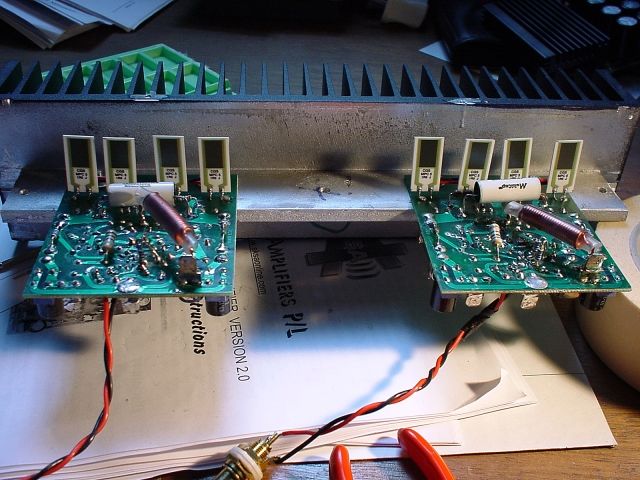I electrified by accident my first AKSA 55+.
I had reallocated the heatsingk and board from the "old"metal enclosure to the wooden one. To be sure I turned the trimpot for the bias completely counter clockwise and removed the 2 fuses as I has also replaced the 2 ceramic 5 W resistors for 4 damped carbon ones.
See:
http://www.audiocircle.com/image.php?id=2736and

Immediately the R100 underneath the empty fuse holder started to smoke.
It lasted probably 0.75 second before I disconnected the power
My heart stood sunk in my shoes. I saw in a flash that I would send the heatsink and connected pcbs all the way from Holland to master surgeon Hugh.
It took me while to undestand what I did wrong.
I accidently brought the V+ rail female spade from the pwr supply on the output spade connector of the AKSA instead of the V+ spade connector, which was underneath the pcb, but I forgot..


Now it is default again as in my other newer AKSA.
What a dumb error.

I put the connector on the right spade and started again. No smoke I measured the emtpy fuses
1.2 volts on the one that did not smoke and 3.5 one the one that previously smoked ..

I already saw the R100 colours were more gray as the resistor was a little burned.
I soldered it out. It measured over 300 ohms.
I replaced it with a new R100 and now both channels were equally 1.2 V

Happilly it happened with the transformator of the AKSA 30+ (25 volts instead of 36, for the tweeter only)
All the other basic measurements were then fine.
Another example how
strong the tolerance of the design is for abberations and grave assemblage mistakes